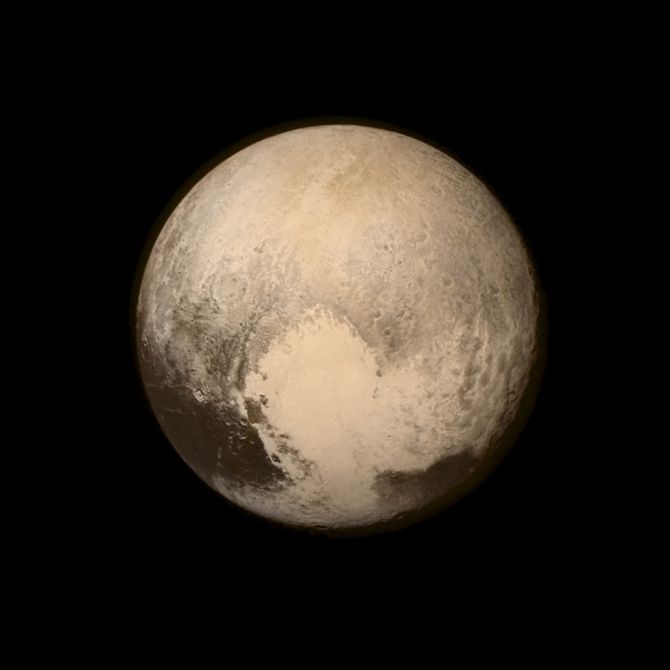Pluto's 100-million-year heart still being formed
July 20, 2015 15:19

NASA's New Horizons spacecraft has discovered a vast, craterless plain in Pluto's 'heart' that appears to be no more than 100 million years old, and is possibly still being shaped by geologic processes. This frozen region is north of Pluto's icy mountains, in the centre-left of the heart feature informally named Tombaugh Region.
"This terrain is not easy to explain," said Jeff Moore, leader of the New Horizons Geology, Geophysics and Imaging Team (GGI) at NASA's Ames Research Centre in California.
"The discovery of vast, craterless, very young plains on Pluto exceeds all pre-flyby expectations," said Moore. This fascinating icy plains region - resembling frozen mud cracks on Earth - has been informally named "Sputnik Planum" (Sputnik Plain) after the Earth's first artificial satellite. It has a broken surface of irregularly-shaped segments, roughly 20 kilometres across, bordered by what appear to be shallow troughs, NASA said. Some of these troughs have darker material within them, while others are traced by clumps of hills that appear to rise above the surrounding terrain. Elsewhere, the surface appears to be etched by fields of small pits that may have formed by a process called sublimation, in which ice turns directly from solid to gas, just as dry ice does on Earth.
Also see: A whole new world on Pluto
"This terrain is not easy to explain," said Jeff Moore, leader of the New Horizons Geology, Geophysics and Imaging Team (GGI) at NASA's Ames Research Centre in California.
"The discovery of vast, craterless, very young plains on Pluto exceeds all pre-flyby expectations," said Moore. This fascinating icy plains region - resembling frozen mud cracks on Earth - has been informally named "Sputnik Planum" (Sputnik Plain) after the Earth's first artificial satellite. It has a broken surface of irregularly-shaped segments, roughly 20 kilometres across, bordered by what appear to be shallow troughs, NASA said. Some of these troughs have darker material within them, while others are traced by clumps of hills that appear to rise above the surrounding terrain. Elsewhere, the surface appears to be etched by fields of small pits that may have formed by a process called sublimation, in which ice turns directly from solid to gas, just as dry ice does on Earth.
Also see: A whole new world on Pluto





 © 2024 Rediff.com -
© 2024 Rediff.com -